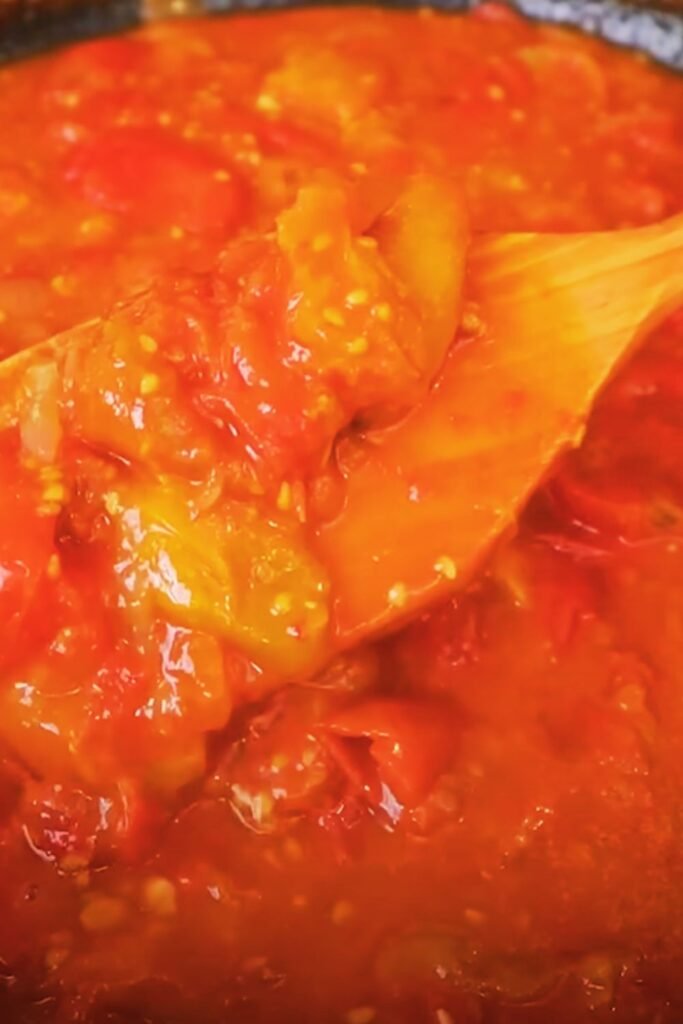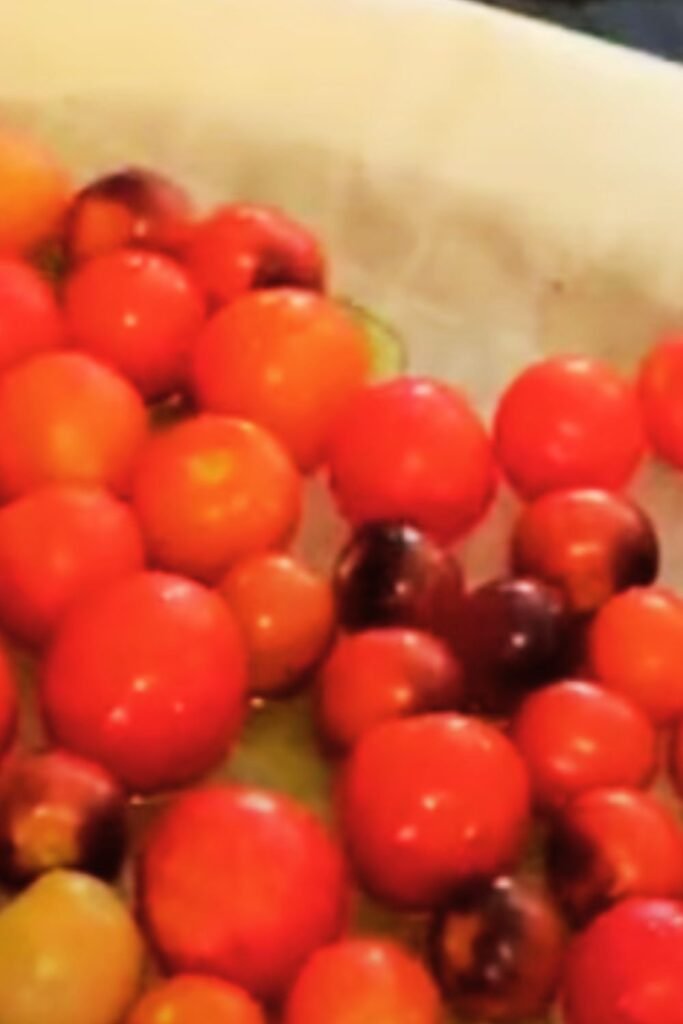As someone who’s been gardening for over a decade, I can tell you that there’s nothing quite like the moment when your tomato plants suddenly explode with fruit. One day you’re carefully nurturing a few green orbs, and the next, you’re drowning in a sea of red, yellow, and purple beauties. While this abundance is a blessing, it can quickly become overwhelming when you’re staring at countertops covered in ripening tomatoes.
I’ve learned through experience that having a variety of preservation and cooking methods at your disposal is essential for any serious tomato grower. Whether you’re dealing with cherry tomatoes that seem to multiply overnight or massive beefsteaks that could feed a small army, I’m here to share my favorite ways to transform your tomato bounty into delicious meals and preserved goods that will last well beyond the growing season.
Fresh Uses for Your Tomato Harvest
1. Classic Bruschetta
There’s something magical about combining fresh tomatoes with basil, garlic, and good olive oil. I dice my ripest tomatoes, mix them with minced garlic, fresh basil, a drizzle of balsamic vinegar, and let the mixture sit for at least 30 minutes. The result is a topping that transforms simple toasted bread into an elegant appetizer.
2. Caprese Salad Variations
I’ve discovered that caprese salad doesn’t have to be limited to the traditional tomato-mozzarella-basil combination. I love experimenting with different tomato varieties, adding peaches or nectarines, or swapping mozzarella for burrata or fresh goat cheese.
3. Fresh Tomato Gazpacho
When the summer heat becomes unbearable, I turn to gazpacho. I blend ripe tomatoes with cucumber, bell pepper, onion, garlic, and bread for body. The key is using the best tomatoes possible – they’re the star of this cooling soup.
4. Tomato Water
This might sound unusual, but tomato water is incredibly versatile. I salt chopped tomatoes heavily and let them drain overnight through cheesecloth. The resulting clear liquid captures pure tomato essence and makes an excellent base for cocktails or light soups.

Preservation Techniques That Actually Work
5. Traditional Canning
I’ve been canning tomatoes for years, and it remains my go-to preservation method. Whole peeled tomatoes, crushed tomatoes, and tomato sauce all freeze beautifully and maintain their flavor throughout the winter months.
6. Dehydrating for Sun-Dried Tomatoes
My dehydrator runs constantly during tomato season. I slice Roma or San Marzano tomatoes lengthwise, salt them lightly, and dehydrate until they’re leathery but still pliable. These concentrated flavor bombs enhance pasta dishes, salads, and sandwiches.
7. Freezing Whole Tomatoes
This is perhaps the easiest preservation method. I simply wash the tomatoes, remove the stems, and place them in freezer bags. When I need them for cooking, the skins slip off easily under running water.
8. Tomato Paste Concentration
Making my own tomato paste allows me to control the consistency and flavor. I cook down tomatoes slowly until they reach a thick, concentrated consistency, then freeze the paste in ice cube trays for easy portioning.
Sauce and Condiment Creations
9. Basic Marinara Sauce
My marinara recipe is simple but requires patience. I cook down tomatoes with onions, garlic, and herbs until the flavors meld completely. I make large batches and freeze them in meal-sized portions.
10. Spicy Arrabbiata
When I want to add heat to my tomato preservation, I create arrabbiata sauce with red pepper flakes and fresh chilies from my garden. The spiciness develops over time, creating a complex flavor profile.
11. Fresh Salsa Verde
Using green tomatoes that won’t ripen before frost, I make salsa verde with jalapeños, onions, and cilantro. This tangy condiment adds brightness to grilled meats and eggs.
12. Tomato Jam
This sweet-savory condiment has become one of my favorite ways to use excess tomatoes. I cook them down with brown sugar, vinegar, and spices until they reach a jam-like consistency. It’s incredible on grilled cheese or charcuterie boards.
International Flavor Profiles

13. Italian Pomodoro Sauce
True pomodoro sauce celebrates the tomato’s natural flavor. I use only tomatoes, garlic, basil, olive oil, and salt. The key is using perfectly ripe tomatoes and not overcooking them.
14. Spanish Sofrito Base
Sofrito forms the foundation of many Spanish dishes. I slowly cook down tomatoes with onions, garlic, and bell peppers until they form a thick, flavorful base that I freeze in portions.
15. Indian Tomato Curry Base
I create curry bases by cooking tomatoes with ginger, garlic, and spices like turmeric and coriander. These bases freeze well and provide the foundation for quick weeknight Indian meals.
16. Mexican Salsa Roja
My salsa roja combines fire-roasted tomatoes with chilies, onions, and garlic. I char the vegetables over an open flame for smoky depth, then blend them to my desired consistency.
Creative Cooking Applications
17. Stuffed Tomatoes
Large beefsteak tomatoes make excellent vessels for stuffing. I hollow them out and fill with mixtures of rice, herbs, ground meat, or grains. They bake beautifully and make impressive presentations.
18. Tomato Tarte Tatin
This upside-down tart showcases tomatoes in an unexpected way. I caramelize halved tomatoes with herbs and balsamic vinegar, then top with puff pastry and bake until golden.
19. Green Tomato Chutney
End-of-season green tomatoes transform into tangy chutney when cooked with vinegar, sugar, and warming spices like cinnamon and ginger. This condiment improves with age and pairs beautifully with cheese.
20. Tomato Confit
Slow-cooking tomatoes in olive oil with herbs creates tender, intensely flavored tomatoes that keep for weeks in the refrigerator. I use them in pasta, on pizza, or as a side dish.
Beverage and Extract Uses
21. Bloody Mary Mix
I create my own Bloody Mary mix using fresh tomato juice, horseradish, Worcestershire sauce, and celery salt. The fresh tomato flavor far surpasses store-bought versions.
22. Tomato Leaf Tea
This might surprise you, but tomato leaves make an interesting herbal tea with a unique, slightly spicy flavor. I dry the leaves and steep them like any herbal tea.
23. Tomato Seed Oil
I save seeds from my best tomatoes, clean them thoroughly, and extract oil through cold-pressing. This oil has a unique flavor and high levels of beneficial compounds.
Advanced Preservation Methods

24. Fermented Tomato Sauce
Fermentation adds complexity and beneficial probiotics to tomato sauce. I ferment chopped tomatoes with salt for several days before cooking them down into sauce.
25. Tomato Leather
Similar to fruit leather, tomato leather concentrates flavor into a portable, shelf-stable form. I puree tomatoes with herbs and seasonings, then dehydrate the mixture until it forms flexible sheets.
Nutritional Benefits and Storage Tips
| Preservation Method | Shelf Life | Nutritional Retention | Best Uses |
|---|---|---|---|
| Fresh Storage | 1-2 weeks | 100% | Salads, sandwiches, snacking |
| Freezing Whole | 8-12 months | 85-90% | Cooking, sauces, soups |
| Canning | 18-24 months | 80-85% | Emergency meals, winter cooking |
| Dehydrating | 12-18 months | 70-75% | Snacking, flavor enhancement |
| Fermentation | 6-8 months refrigerated | 90-95% plus probiotics | Condiments, digestive health |
Storage Temperature Guidelines
| Storage Method | Temperature Range | Humidity Requirements | Container Type |
|---|---|---|---|
| Counter Ripening | 65-75°F | 85-90% | Open air, stem down |
| Refrigerator | 55-60°F | 90-95% | Perforated plastic bags |
| Root Cellar | 50-55°F | 85-90% | Wooden crates, newspaper layers |
| Freezer | 0°F or below | N/A | Freezer bags, vacuum sealed |
Troubleshooting Common Issues
When dealing with excess tomatoes, I’ve encountered various challenges over the years. Cracking occurs when tomatoes receive irregular watering, but these fruits are still perfect for cooking applications. Blossom end rot, caused by calcium deficiency, affects the appearance but doesn’t impact the usable portions of the fruit.
For tomatoes that are taking too long to ripen, I’ve found that placing them in paper bags with ripe apples accelerates the process. The ethylene gas from the apples triggers ripening in the tomatoes.
Seasonal Planning and Succession
I’ve learned to stagger my tomato plantings to avoid overwhelming harvests. By planting early, mid-season, and late varieties, I extend my harvest period and make the abundance more manageable. I also plan my preservation schedule around peak harvest times, dedicating specific weekends to sauce-making and canning.
Questions and Answers
Q: How can I tell when tomatoes are perfectly ripe for different uses?
For fresh eating, I look for tomatoes that give slightly when pressed and have full color development. For cooking and preserving, slightly underripe tomatoes often work better as they hold their shape during processing. The aroma at the stem end is also a reliable indicator – ripe tomatoes have a sweet, earthy smell.
Q: What’s the best way to remove tomato skins for sauce-making?
I score an X on the bottom of each tomato, blanch them in boiling water for 30-60 seconds, then immediately transfer them to ice water. The skins slip off easily after this treatment. For large batches, I use a food mill which removes skins and seeds simultaneously.
Q: Can I mix different tomato varieties when making sauce?
Absolutely! I often combine varieties for complex flavor profiles. Paste tomatoes like San Marzanos provide body, while slicing tomatoes add sweetness, and cherry tomatoes contribute acidity. The key is balancing flavors and adjusting cooking times based on the varieties’ characteristics.
Q: How do I prevent my preserved tomatoes from becoming too watery?
Salt is your friend here. I salt chopped tomatoes and let them drain for 30 minutes before cooking. This removes excess moisture and concentrates flavors. For canning, I add lemon juice or citric acid to maintain proper acidity levels.
Q: What should I do with tomatoes that have small blemishes or cracks?
These tomatoes are perfect for cooking applications. I simply cut away the damaged portions and use the rest for sauces, soups, or preserves. Never use tomatoes with soft spots or signs of mold, as these can compromise the safety of preserved products.
Q: How can I extend the fresh storage life of my tomatoes?
Never refrigerate tomatoes unless they’re fully ripe and you want to slow further ripening. Store them stem-side down at room temperature, away from direct sunlight. Check them daily and use the ripest ones first. For longer storage, I pick tomatoes just before full ripeness and let them finish ripening indoors.
Q: Is it safe to can tomatoes without added acid?
No, tomatoes have borderline acidity levels, especially newer low-acid varieties. I always add lemon juice or citric acid when canning to ensure safety. For every quart of tomatoes, I add 2 tablespoons of lemon juice or 1/2 teaspoon of citric acid.
Q: What’s the difference between determinate and indeterminate varieties for preservation planning?
Determinate varieties ripen most of their fruit within a concentrated period, making them ideal for large-batch preservation projects. Indeterminate varieties produce continuously throughout the season, providing steady supplies for fresh use and smaller preservation batches. I grow both types to balance my harvest timing.
The beauty of having excess tomatoes lies not just in the immediate abundance, but in the year-round enjoyment they provide through proper preservation and creative cooking. Each method I’ve shared offers different advantages, and I encourage you to experiment with various techniques to find your personal favorites. Remember that the best preservation method is the one you’ll actually use, so start with simpler techniques and gradually expand your repertoire as you gain confidence and experience.